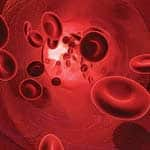Life Extension Magazine®
On March 18, 2010, headline news articles proclaimed that drugs used to lower blood pressure, triglycerides, and other vascular risk factors do not protect diabetics against heart attack or stroke.1,2 The studies cited by media were badly flawed. That means the findings from these studies have no relationship to those who follow a comprehensive program to prevent and reverse the clinical course of type 2 diabetes. It is important that you understand how poorly designed these studies were. Just imagine falling from a 70-story building. This of course will kill you. If the height is reduced by 25% (to 52 floors), you still die from the fall. Researchers took a large group of type 2 diabetics and gave them a drug called Tricor® (fenofibrate) or a placebo. At the end of the study, median triglyceride levels fell 25.6% from 164 to 122 mg/dL in the fenofibrate group, and 10.0% from 160 to 144 mg/dL in the placebo group.1 When no significant reductions in heart attack or stroke occurred, the media declared the therapies useless. The reality is that high-risk cardiac patients need to suppress triglycerides below 60-80 mg/dL to protect against vascular disease.3-9 Why Drugs Don’t Prevent Heart Attacks in DiabeticsAs Life Extension® long ago stated, triglyceride blood levels above 100 mg/dL in healthy people are dangerous. Those with other cardiovascular risk factors (like diabetes) need to keep triglycerides below 60-80. Conventional doctors still believe antiquated reference ranges that claim triglyceride levels up to 149 are safe.
There are 17 independent risk factors that cause heart attack and stroke. In the flawed clinical trials on type 2 diabetics, researchers partially corrected only 5 (or fewer) of these 17 risk factors. Is it any wonder why conventional cardiology fails so many aging individuals? The medical establishment refuses to utilize findings from the published scientific literature to protect their patients. That’s why it is so important that Life Extension members have a comprehensive Male or Female Blood Test Panel every year. These blood tests not only detect a wide range of cardiac risk factors, but they also can identify those in a pre-diabetic state. More than 23 million Americans have type 2 diabetes today. The frightening projection from the National Institutes of Health is that at least 57 million Americans are in a “pre-diabetic” state, indicating they are at significant future risk of suffering deadly diabetic complications like kidney failure, blindness, peripheral nerve damage, heart disease, and stroke.10 If detected early, those with elevated blood sugar levels (but not overt diabetes) can reduce type 2 diabetes risk by 58% with lifestyle interventions.11 The drug metformin alone reduces diabetes risk by 31%.11 Life Extension members have access to a much wider range of natural approaches to further protect against type 2 diabetes. Doctors have finally come to the realization of the critical need to prevent “pre-diabetes” from mushrooming into full-blown type 2 diabetes. Prevention begins with the comprehensive blood testing offered to Life Extension members at a fraction of the cost of commercial labs. Blood Test Super Sale… Lowest Prices of the Year!Once a year, Life Extension® discounts its already low blood test prices. Until June 7, 2010, members can order the Male or Female Blood Test Panel for only $199. According to the February 11, 2010 New England Journal of Medicine: “The lifetime risk of type 2 diabetes is now more than one in three in the general population.”12
Comprehensive blood testing not only reveals if you are pre-diabetic (or diabetic), but the test results also identify certain risk factors that if corrected can prevent type 2 diabetes from developing. Type 2 diabetes is not an acute illness. For many people, the disease festers in the body for seven to ten years before actual diagnosis. Studies have shown that type 2 diabetes can be prevented in at-risk people,10, 13-16 which is the reason why early detection is so important before deadly complications like coronary artery disease result. The regular member discounted price for the blood tests included in the Male or Female Panels is $269. If you order by June 7, 2010, the price is slashed to $199. When you order these tests, a requisition form is sent listing blood drawing stations in your local area. Appointments are usually not necessary, meaning you can have your blood drawn at your convenience. To order these blood tests by phone or if you have any questions, call 1-800-208-3444 (24 hours a day). You can also order online by visiting www.lifeextension.com/Blood. Nutrients in Lieu of DrugsThe FDA-approved drug Tricor® is associated with a wide range of side effects, whereas fish oil provides multiple vascular benefits.17-21 Fish oil and other nutrients dramatically slash stubbornly high triglyceride levels.22-29 Comprehensive blood testing reveals whether the nutrients, hormones, and drugs you take are reducing vascular risk factors to optimal safe ranges. If you have any questions on the scientific information in this article, please call a Life Extension® Health Advisor at 1-866-864-3027.
| |||||
| References | |||||
| 1. The ACCORD Study Group. Effects of Combination Lipid Therapy in Type 2 Diabetes Mellitus. N Engl J Med. 2010 Mar 18. 2. The ACCORD Study Group. Effects of Intensive Blood-Pressure Control in Type 2 Diabetes Mellitus. N Engl J Med. 2010 Mar 14. 3. Cullen P. Evidence that triglycerides are an independent coronary heart disease risk factor. Am J Cardiol. 2000 Nov 1;86(9):943-9. 4. Bansal S, Buring JE, Rifai N, Mora S, Sacks FM, Ridker PM. Fasting compared with nonfasting triglycerides and risk of cardiovascular events in women. JAMA. 2007 Jul 18;298(3):309-16. 5. Freiberg JJ, Tybjaerg-Hansen A, Jensen JS, Nordestgaard BG. Nonfasting triglycerides and risk of ischemic stroke in the general population. JAMA. 2008 Nov 12;300(18):2142-52. 6. Nordestgaard BG, Benn M, Schnohr P, Tybjaerg-Hansen A. Nonfasting triglycerides and risk of myocardial infarction, ischemic heart disease, and death in men and women. JAMA. 2007 Jul 18;298(3):299-308. 7. Miller M, Seidler A, Moalemi A, Pearson TA. Normal triglyceride levels and coronary artery disease events: the Baltimore Coronary Observational Long-Term Study. J Am Coll Cardiol. 1998 May;31(6):1252-7. 8. Haim M, Benderly M, Boyko V, et al. Decrease in triglyceride level by bezafibrate is related to reduction of recurrent coronary events: a Bezafibrate Infarction Prevention substudy. Coron Artery Dis. 2006 Aug;17(5):455-61. 9. Lahdenperä S, Syvänne M, Kahri J, Taskinen MR. Regulation of low-density lipoprotein particle size distribution in NIDDM and coronary disease: importance of serum triglycerides. Diabetologia. 1996 Apr;39(4):453-61. 10. Available at: http://www.diabetes.org/community-events/programs/alert-day/. Accessed March 22, 2010. 11. Knowler WC, Barrett-Connor E, Fowler SE, et al. Reduction in the incidence of type 2 diabetes with lifestyle intervention or metformin. N Engl J Med. 2002 Feb 7;346(6):393-403. 12. Gregg EW. Are children the future of type 2 diabetes prevention? N Engl J Med. 2010 Feb 11;362(6):548-50. 13. Tuomilehto J, Lindström J, Eriksson JG, et al. Prevention of type 2 diabetes mellitus by changes in lifestyle among subjects with impaired glucose tolerance. N Engl J Med. 2001 May 3;344(18):1343-50. 14. Buchanan TA, Xiang AH, Peters RK, et al. Preservation of pancreatic beta-cell function and prevention of type 2 diabetes by pharmacological treatment of insulin resistance in high-risk hispanic women. Diabetes. 2002 Sep;51(9):2796-803. 15. Chiasson JL, Josse RG, Gomis R, Hanefeld M, Karasik A, Laakso M. Acarbose for prevention of type 2 diabetes mellitus: the STOP-NIDDM randomised trial. Lancet. 2002 Jun 15;359(9323):2072-7. 16. Torgerson JS, Hauptman J, Boldrin MN, Sjöström L. XENical in the prevention of diabetes in obese subjects (XENDOS) study: a randomized study of orlistat as an adjunct to lifestyle changes for the prevention of type 2 diabetes in obese patients. Diabetes Care. 2004 Jan;27(1):155-61. 17. Connor SL, Connor WE. Are fish oils beneficial in the prevention and treatment of coronary artery disease? Am J Clin Nutr. 1997 Oct;66(4 Suppl):1020S-31S. 18. Ciubotaru I, Lee YS, Wander RC. Dietary fish oil decreases C-reactive protein, interleukin-6, and triacylglycerol to HDL-cholesterol ratio in postmenopausal women on HRT. J Nutr Biochem. 2003 Sep;14(9):513–21. 19. Vanschoonbeek K, Feijge MAH, Paquay M, et al. Variable hypocoagulant effect of fish oil intake in humans: modulation of fibrinogen level and thrombin generation. Arterioscler Thromb Vasc Biol. 2004 Sept;24(9):1734–40. 20. Albert CM, Hennekens CH, O’Donnell CJ, et al. Fish consumption and risk of sudden cardiac death. JAMA. 1998 Jan 7;279(1):23-8. 21. Available at: http://www.rxabbott.com/pdf/tricorpi.pdf. Accessed March 29, 2010. 22. Stark KD, Park EJ, Maines VA, Holub BJ. Effect of a fish-oil concentrate on serum lipids in postmenopausal women receiving and not receiving hormone replacement therapy in a placebo-controlled, double-blind trial. Am J Clin Nutr. 2000 Aug;72(2):389-94. 23. Skulas-Ray AC, West SG, Davidson MH, Kris-Etherton PM. Omega-3 fatty acid concentrates in the treatment of moderate hypertriglyceridemia. Expert Opin Pharmacother. 2008 May;9(7):1237-48. 24. Leaf DA, Hatcher L. The effect of lean fish consumption on triglyceride levels. Phys Sportsmed. 2009 Apr;37(1):37-43. 25. Zuliani G, Galvani M, Leitersdorf E, Volpato S, Cavalieri M, Fellin R. The role of polyunsaturated fatty acids (PUFA) in the treatment of dyslipidemias. Curr Pharm Des. 2009 15(36):4087-93. 26. Li XP, Duan J, Zhao SP, Tan MY, Xu ZM, Zhang DQ. Efficacy and safety of extended-release niacin alone or with atorvastatin for lipid profile modification. Zhonghua Yi Xue Za Zhi. 2006 Sep 12;86(34):2399-403. 27. Malik S, Kashyap ML. Niacin, lipids, and heart disease. Curr Cardiol Rep. 2003 Nov;5(6):470-6. 28. Elam MB, Hunninghake DB, Davis KB, et al.Effect of niacin on lipid and lipoprotein levels and glycemic control in patients with diabetes and peripheral arterial disease: the ADMIT study: A randomized trial. Arterial Disease Multiple Intervention Trial. JAMA. 2000 Sep 13;284(10):1263-70. 29. Guyton JR, Blazing MA, Hagar J, et al. Extended-release niacin vs gemfibrozil for the treatment of low levels of high-density lipoprotein cholesterol. Niaspan-Gemfibrozil Study Group. Arch Intern Med. 2000 Apr 24;160(8):1177-84. |



